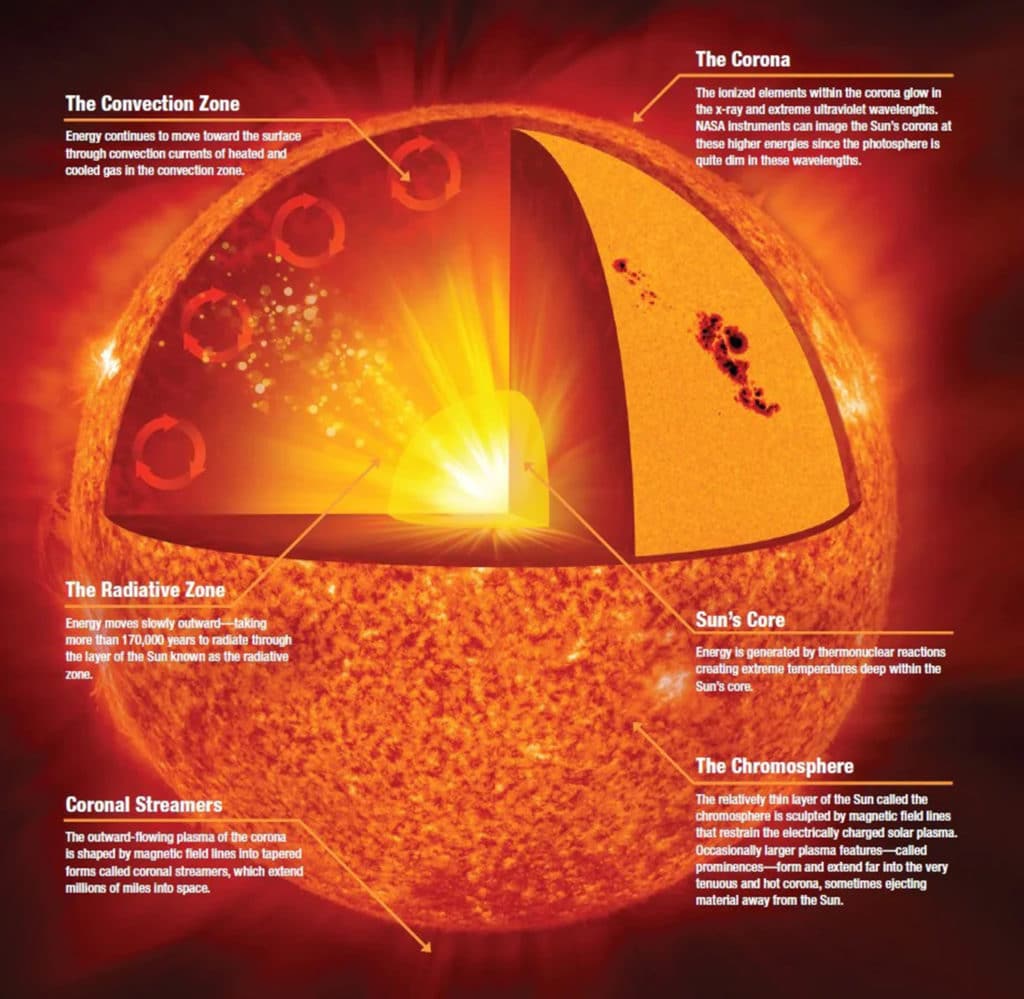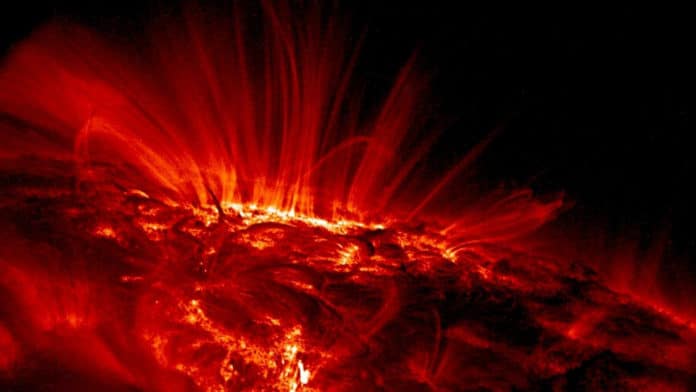The Sun is the closest star to Earth, about 93 million miles away. The mysterious star has always loomed large, bringing heat and light, and life.
The Sun is bursting with energy, violently exploding with solar flares, coronal mass ejections, and other kinds of eruptions up to hundreds of times per year. These severe space weather events — solar storms — compress Earth’s magnetic shield, releasing enough power to blind satellites, disrupt radio signals, and plunge entire cities into electrical blackouts.
Yet, how solar storms occur remains one of the mysteries of the Sun. Also, it is impossible to predict when these events will occur.
Scientists at the University of Sydney and in the U.S. have solved a long-standing mystery about the Sun that could help astronomers predict space weather. Further, it could help us prepare for potentially devastating geomagnetic storms if they hit Earth.
In a new study, scientists offered a strong theoretical framework to improvise understanding of the Sun’s internal magnetic dynamo, also known as a solar dynamo.
The solar magnetic field is generated through the action of a dynamo process operating in the Sun’s interior. It is of great importance to understand the workings of the solar dynamo, as it causes this solar cycle.
The convection zone is one of the several regions in the Sun. The convection zone is the outer-most layer of the solar interior. It extends from a depth of about 200,000 km right up to the visible surface. At the base of the convection zone, the temperature is about 2,000,000° C. The region consists of a 200,000-kilometer-deep ocean of super-hot rolling, turbulent fluid plasma taking up the outer 30 percent of the star’s diameter.

According to the existing solar hypothesis, the largest swirls and eddies take up the convection zone, imagined as giant circular convection cells. However, scientists have never found these cells: a long-standing problem known as the ‘Convective Conundrum.’
Mathematician Dr. Geoffrey Vasil said, “There is a reason for this. Rather than circular cells, the flow breaks up into tall spinning cigar-shaped columns ‘just’ 30,000 kilometers across. This is caused by a much stronger influence of the Sun’s rotation than previously thought.”
“You can balance a skinny pencil on its point if you spin it fast enough. Skinny cells of solar fluid spinning in the convection zone can behave similarly.”
“We don’t know very much about the inside of the Sun, but it is hugely important if we want to understand solar weather that can directly impact Earth. Strong rotation is known to completely change the properties of magnetic dynamos, of which the Sun is one.”
Collaborators Professor Keith Julien of the University of Colorado and Dr. Nicholas Featherstone at Southwest Research Institute in Boulder say that “this predicted rapid rotation inside the Sun suppresses what otherwise would be larger-scale flows, creating more variegated dynamics for the outer third of the solar depth.”
Dr. Vasil said, “By properly accounting for rotation, our new model of the Sun fits observed data and could dramatically improve our understanding of the Sun’s electromagnetic behavior.”
“The next solar max is in the middle of this decade, yet we still don’t know enough about the Sun to predict if these cyclical events will produce a dangerous storm.”
“While a solar storm hitting Earth is very unlikely, like an earthquake, it will eventually happen, and we need to be prepared.”
“Better knowledge of the internal dynamism of our home star could help planners avoid disaster if they have enough warning to shut down equipment before a blast of energetic particles does the job instead.”
“We cannot explain how sunspots form. Nor can we discern what sunspot groups are most prone to violent rupture. Policymakers need to know how often it might be necessary to endure a days-long emergency shutdown to avoid a severe catastrophe.”
Scientists are further planning to test their model through observation using a technique known as helioseismology to listen inside the beating heart of the star.
Dr. Vasil said, “We hope our findings will inspire further observation and research into the driving forces of the Sun.”
Journal Reference:
- Geoffrey M. Vasil et al., Rotation suppresses giant-scale solar convection, Proceedings of the National Academy of Sciences (2021). DOI: 10.1073/pnas.2022518118
